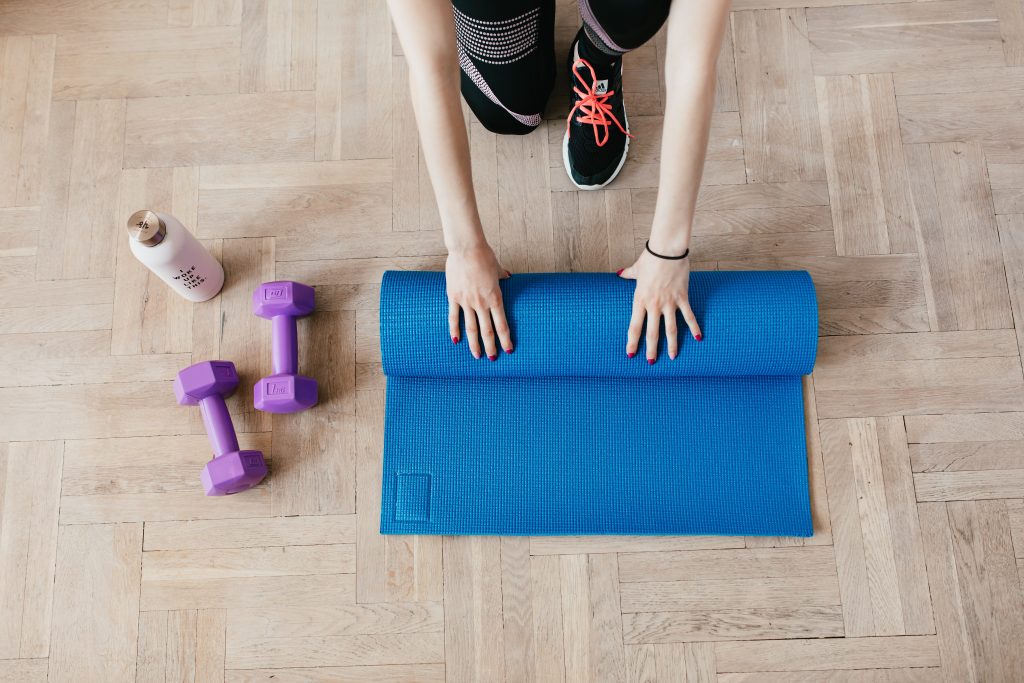Committing to a fitness journey is one of the smartest choices for your health and happiness. Whether you’re looking to shed some pounds, bulk up, gear up for a marathon, or just feel invigorated, consistency in your workouts is a big step forward. But just going to the gym and repeating the same routines might not get you where you want to be. To truly see results, you need to be informed, have a plan, push yourself, and sometimes step outside your comfort zone.
This blog will explore nine strategies to help you level up at the gym. These tips will guide you in burning those calories more effectively, sculpting your muscles, and optimizing your fitness regime.
1. Understanding Your Body’s Needs
Before creating any workout regimen, taking time for self-reflection is important. Consider mobility, flexibility, strength, endurance, and coordination factors to assess your current abilities and limitations. Note any persistent problem areas or imbalances that need focused correction. Gain clarity on your overall objectives – is your priority fat loss, muscle gain, or improving cardiovascular fitness?
Answering these questions will help you craft customized training plans tailored to your body’s specific needs and aimed at your goals. This self-assessment will also inform your choice of helpful workout tools and supplements. For instance, those seeking muscle growth may benefit from adding a high-quality peptide from a reputable company like Sports Technology Labs to their post-workout nutrition routine.
2. Setting Clear and Achievable Goals
Meaningful goal setting provides the foundation for fitness success. Start by defining your big-picture goals. For instance, you may want to complete a half marathon or bench press your body weight. Then break these down into smaller, measurable steps with clear timelines. Setting specific, measurable, achievable, relevant, and time-bound S.M.A.R.T. goals is an effective strategy.
Rather than just aiming to “get in shape,” set a goal to lose 2 pounds per week through 45 minutes of cardio and full-body strength training four times weekly. Tracking quantifiable metrics keeps you focused and motivated. Just be sure your goals are realistic – slow and steady progress is more sustainable. Celebrate small wins along the way!
3. Importance of Warm-Ups
Warming up is vital to any gym session, engaging your muscles and increasing blood flow before the hard work begins. An effective warm-up eases your body into exercise, enhancing performance and reducing injury risk. Spend at least 10 minutes warming up before both cardio and strength training.
For cardio, start with 5-10 minutes of light activity like walking, leg swings, marching, or cycling at low resistance. Then gradually increase your pace and intensity. Dynamic stretches, bodyweight squats, and light cardio drills make great warm-ups before lifting. Finish your warm-up with a few practice reps at lower weight/higher reps before hitting your main working sets.
4. Varying Your Workout Routine
Variety is key to avoiding plateaus and getting out of workout ruts. Your muscles adapt to repetitive training, making ongoing gains difficult. Mix up your cardio by alternating between the treadmill, elliptical, cycling, and rowing machine. Switch between steady state and HIIT sessions. Include cross-training like swimming, hiking, or sports.
For lifting, change your rep ranges, adjust rest periods, and swap out exercises targeting the same muscle groups.
5. Mastering Proper Technique
Proper form and posture are vital for maximizing your training while preventing injury. Start with low weight and really focus on nailing down your form before increasing the challenge.
Invest in a few sessions with a qualified trainer when starting out or learning new techniques. They can ensure you have the basics down and safely progress. Don’t ego lift – leave your ego at the door and lift smart.
6. Incorporating Strength Training
No matter your fitness goals, a strength training program built on compound lifts and targeted isolation exercises should be the foundation. Lifting weights boosts metabolism, builds lean muscle mass, and enhances bone density. Mixing strength and cardio training is optimal for fat loss.
Start with simple beginner total body moves like squats, deadlifts, presses, and rows. Get the movements down before adding weight. Schedule at least two full-body lifting sessions per week, and hit all the major muscle groups. As you advance, a split routine working different body parts on different days can further maximize gains.
7. Monitor Your Nutrition
Exercise and nutrition go hand-in-hand. Fuel your workouts with nutrient-dense whole foods and get enough protein to support muscle recovery. Before training, eat a mix of complex carbs and protein. Post-workout, focus on high-quality proteins and carbs to replenish glycogen stores.
Cut back on sugar, fried foods, and refined carbs, hindering energy levels and workout quality. Stay adequately fueled by eating every 3-4 hours. And don’t skimp on calories – this causes the body to break down muscle for energy rather than burning fat. A balanced diet optimized for your goals amplifies the benefits of exercise.
8. Seek Feedback and Expertise
One of the best ways to improve is to learn from others. Hire a qualified personal trainer for a few sessions when starting a new program to ensure you begin on the right foot with proper form. Take group exercise classes where instructors can provide feedback and motivation.
If possible, find a knowledgeable workout partner who can spot your form issues and push you to work harder than you would solo. Their fresh perspective may reveal areas you can upgrade. Most gyms offer introductory packages with a few training sessions – take advantage of these.
9. Notice Any Signs Of Exertion
As you increase the intensity and challenge yourself, pay close attention to how your body responds. Learn to differentiate between expected muscle soreness and signs of overtraining like persistent fatigue, decreased performance, and nagging joint pain.
Be prepared to dial back or take a rest day when needed. Increase weight and intensity gradually over time to avoid burnout. Minor tweaks like reducing reps or sets for an exercise can allow you to keep progressing safely if you feel overworked. Don’t ignore warning signs of overexertion. Learning to balance intensity with recovery will improve your long-term results.
Conclusion
Optimizing your workouts is an ongoing process that requires diligence, patience, and a willingness to adapt. But applying these tips will help you continually enhance your gym sessions to maximize gains. Define your needs, set S.M.A.R.T. goals, master the fundamentals, focus on progressive overload, and stay open-minded. You’ll be amazed by what you can achieve on your fitness journey with consistent effort and smart training. The key is to keep growing stronger, one workout at a time.




